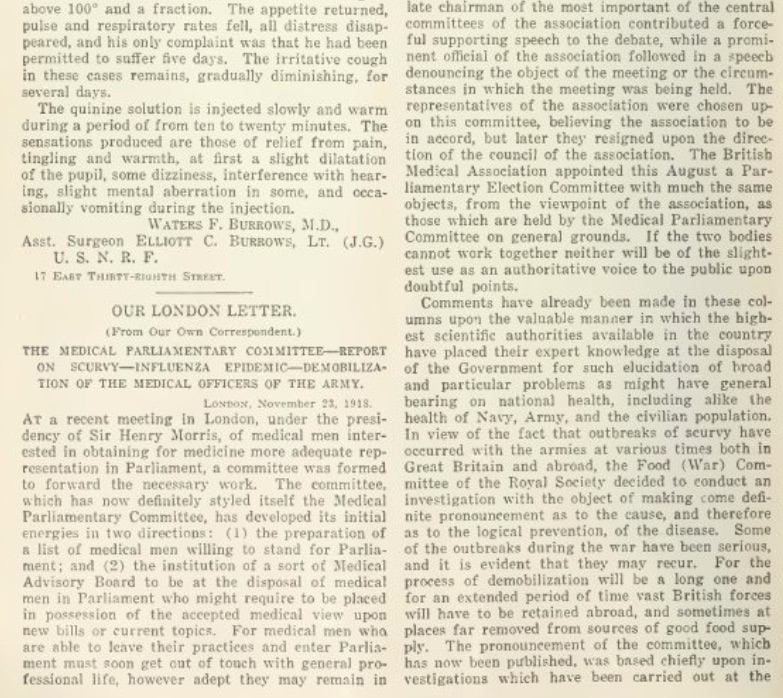Source: Edmund Fordham
With the assistance of professional librarian services, Edmund Fordham unearthed medical documentation dating from the 1918 Spanish Flu epidemic, that observed the positive effect of quinine on suffering patients.
Records from the Burrows & Burrows (1918) Medical Record v94 n25 21 Dec 1918 pp1081-2 included the following observations:
“intravenous injection will prevent or astoundingly diminish the number of later progressive pneumonias and the corresponding high mortality”
“when it is evidenced that spontaneous recovery is becoming doubtful the intravenous injection of quinine is given at once”
Dec 1918 the cases were “too few to permit of scientific certainty”. By Feb 1920 “a large number of cases have been injected”. Burrows & Burrows (1920) Medical Record v97 n6 p 235


“We do not wait to see if the disease will control itself. The earlier the injection is made the better, and to do otherwise is only to run a risk”. “It is certainly advisable to make the injection on or before the third day of the average case”
“… but one injection is required to cause the disappearance of the influenza symptoms”
“The absence of a specific action upon the secondary pneumonia emphasizes the importance of early injection”
Edmund Fordham observed “Recall they didn’t have penicillin in 1918.'”
And further:
“The treatment is equally effective at all ages. The youngest injected was 4 years, the oldest 63”.
Related: Hydroxychloroquine ‘very safe,’ says Dr. Scott Atlas; blasts ‘garbage’ medical studies
100 doctors go to Brasilia to order hydroxychloroquine from popular pharmacies
Melbourne healthcare workers recruited for hydroxychloroquine prophylactic trial
Hydroxychloroquine, Parachutes And How to Understand ‘The Evidence’

